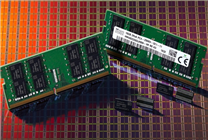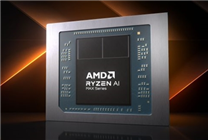Soaring Memory Prices: Impact of AI Demand and Market Trends
Summary:
- Recent trends show dramatic increases in memory and hard disk prices, significantly influenced by the booming AI industry.
- Manufacturers are delaying the release of new memory kits until 2026, awaiting clarity on pricing trends.
- Global consumers and various industries, including smartphones, are feeling the impact of these price hikes.
Recently, memory and hard disk prices have surged significantly due to intense market dynamics, primarily driven by the burgeoning demand from artificial intelligence (AI) infrastructures. This rise in memory costs has raised concerns across various sectors, including consumer electronics and enterprise solutions.
Leading manufacturers have announced a delay in the introduction of new memory kits, shifting their timeline from the second half of 2025 to 2026. This postponement is intended to gauge the impact of the ongoing supply constraints and fluctuating price patterns.
Insights reveal that popular memory brands, including Corsair and Team Group, have experienced steep price escalations, leading to a temporary halt on the launch of new sets. The decision to hold off on new product introductions reflects a strategic move by manufacturers to better understand market conditions before re-entering with new offerings.
Experts suggest that if the current supply-demand imbalance persists, skyrocketing memory prices could stretch on for an extended period, possibly lasting up to a decade. This prolonged increase would not only affect manufacturers but also consumers who rely on these essential components.
The effects are evident in the retail sector, where some stores in Japan have implemented purchasing restrictions due to insufficient stock. Such measures illustrate the widespread impact of memory shortages on global consumers.
The smartphone industry is also bracing for impact. Major players, including Xiaomi, have publicly indicated that the rising memory costs could lead to increased prices for their mobile products. This potential price hike would likely ripple throughout the smartphone ecosystem, affecting both producers and consumers.
In response to these challenges, memory manufacturers have begun reallocating their DRAM production capacity toward high-bandwidth memory (HBM) to meet the escalating demand driven by AI technologies. This strategic pivot underscores the overwhelming pressure placed on memory resources by the AI sector.
Moreover, the shift in production focus raises concerns for NAND flash memory, typically utilized in storage solutions like solid-state drives (SSDs) and memory cards. As major DRAM producers also have capabilities in NAND flash production, prioritizing HBM may inadvertently contribute to shortages of NAND flash components, compounding the existing challenges in the memory market.
The rapidly evolving landscape around memory prices and the sustained demand from AI infrastructure stand as a testament to the changing dynamics within the tech sector. As manufacturers navigate these turbulent waters, both businesses and consumers must remain vigilant about upcoming price changes and availability concerns.
In light of these developments, it is clear that stakeholders across the board—ranging from manufacturers and retailers to end consumers—must adapt to a market characterized by uncertainty and rapid change. Continuous monitoring of market trends will be crucial for effectively anticipating future challenges and opportunities in the memory and hard disk sectors.
As we move forward, the landscape will likely undergo further transformation, impacting not only pricing but also innovation and product rollout timelines. Stakeholders should prepare for a protracted period of volatility, ultimately striving for resilience in the face of evolving market conditions.






